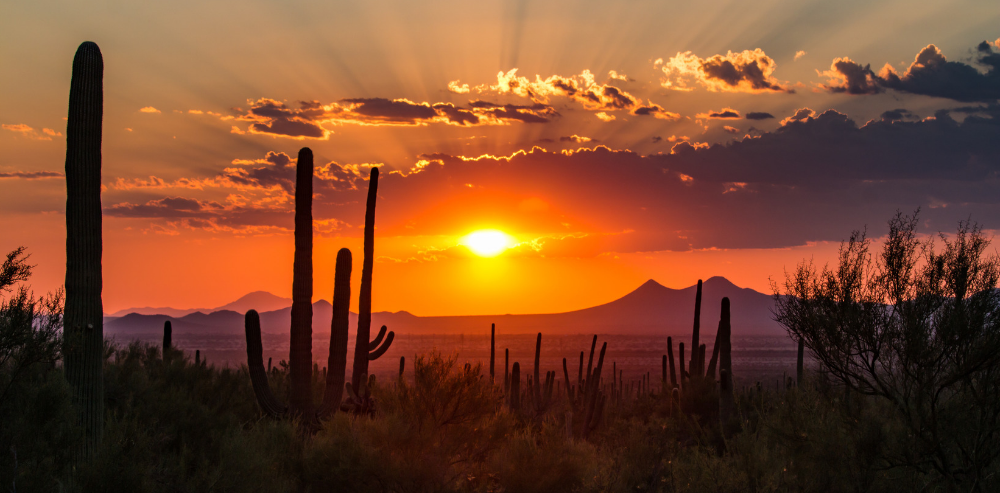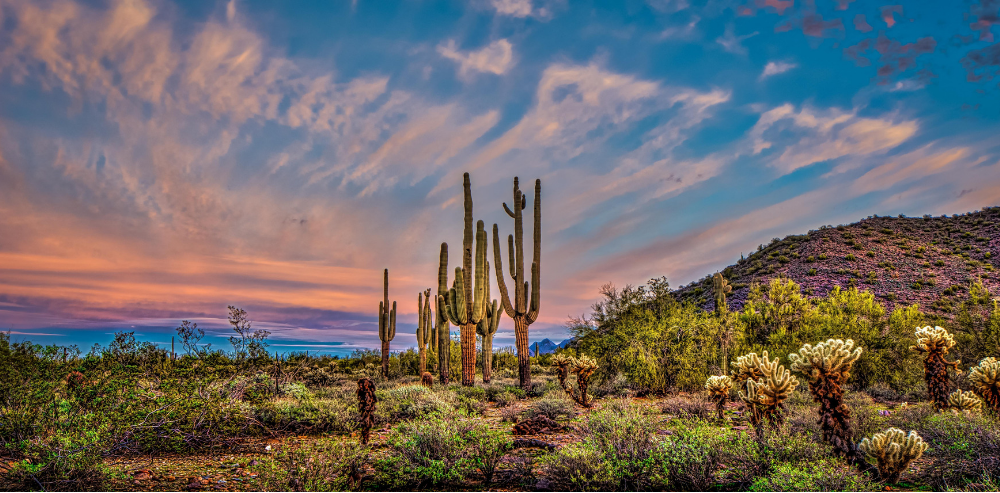Arizona Wine Country
Posted on August 18, 2018 by Laura Lucky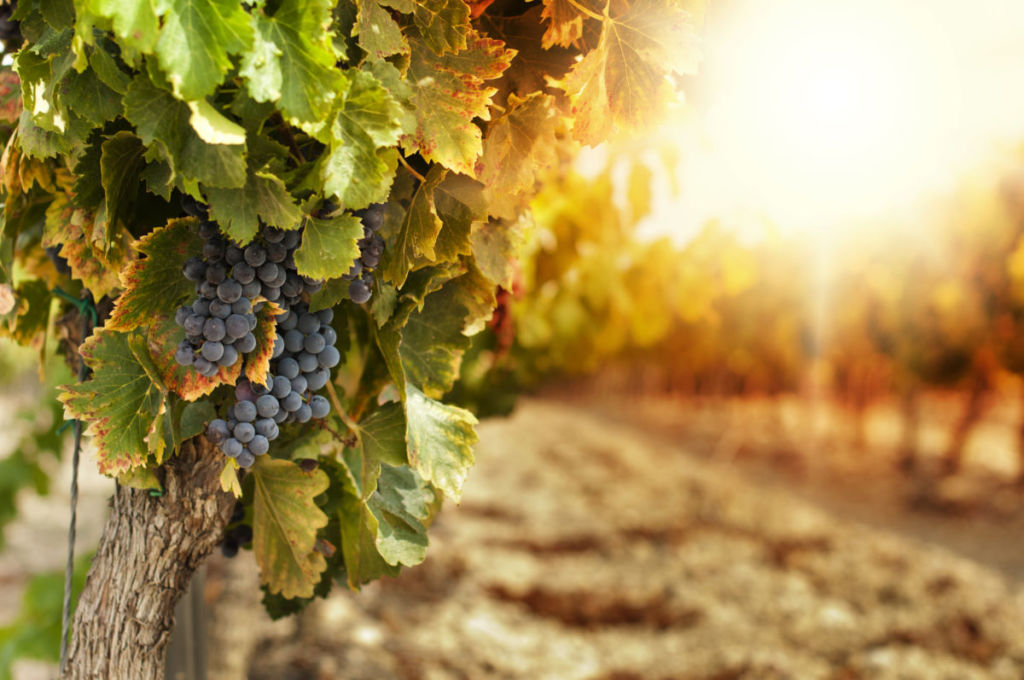
Really? A booming Arizona wine industry? It’s easy to understand the naysayers and doubts of the oenophiles amongst us. With visions of dried out tumbleweeds blowing across the hot, dusty and desolate desert, many people not very familiar with our diverse bio climatic zones just can’t wrap their minds around the idea of wine being made in Arizona. And good wine at that. It’s a bit reminiscent perhaps, of the famous “Judgement of Paris” in 1976 when a select few California vintners went head to head against the stately and proven French wines in a blind taste test. The world was shocked when French judges chose California wines as three of the top four wines! From that moment, the modern era of the California wine industry was born.
With that in mind, don’t discount what’s been happening in Arizona over the last several decades. The Arizona wine industry is exploding all around us and if you haven’t taken a tasting tour just yet, you’re sure to be in for a pleasant surprise! Not only have many of these Arizona wines been recognized in Wine Spectator magazine, but some have been served multiple times at the White House and at James Beard dinners in New York.
While portions of Arizona are desert, and northern Arizona is mountainous, there is an altitude band of 3,500 to 5,500 feet that is the sweet spot for growing wine grapes. Hot during the day and cool at night, these regions benefit from diurnal temperature variations – meaning that there is a great difference in temperatures within a day, sometimes as much as 50 degrees. The heat is necessary for the sugar production in the grapes and the cool nights allow for the acid retention. At this elevation, there is less oxygen (thus more carbon dioxide), and higher levels of ultra violet light. This thickens the skins on the grapes and gives the juice more fragrance and intensity. The extra UV Arizona grapes receive tends to soften the tannins as well. Additionally, Arizona’s monsoon storms at the end of summer and early fall bring fast bursts of rain and elevated dew points during the wine growing season. It’s these dramatic climate conditions that develop the complexity of the grapes and are the hallmark of the Arizona wine industry.
Although viticulture in Arizona began in the 1500s when missionary Spanish Jesuit priests were creating wine to use as a sacrament, the modern wine industry began in the 1970s after the University of Arizona established an experimental vineyard in which they studied the feasibility of growing wines in Arizona. Dr. Dutt, who led the experiment southeast of Tucson, formed the first winery, Sonoita Vineyards.
There are three regions in which wine is made in Arizona: the Verde Valley near Sedona, Willcox east of Tucson and Sonoita/Elgin to the southeast of Tucson. The latter two have been officially named an AVA (American Viticulture Area).
There are a multitude of varietals being crafted in these regions including Syrah, Grenache, Viognier, Zinfandel, Tempranillo, Sangiovese, Cabernet Sauvignon, Malbec, Mouvedre, Petite Verdot and Merlot. Additionally, some lesser known varietals have won awards such as the Vidal Blanc and Malvasia Bianca.
Sonoita/Elgin
As the oldest wine producing area of the three, its rolling grasslands produce a soil that has been compared to the Burgundy region of France. Made up of igneous and sedimentary rock, the loose soil doesn’t retain water very well, which is an excellent characteristic for growing grapes as soil that doesn’t drain easily can produce water-logged, tasteless grapes.
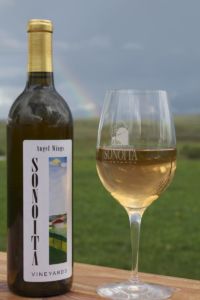 Some of the better-rated vineyards among the 10 in this area are Dos Cabezas WineWorks (winner of the 2016 Arizona Republic Wine Competition’s Growers Cup Best Red Wine with its 2013 El Norte), Callahan Vineyards (of which Robert Parker of The Wine Advocate said “must be one of the best wine secrets in America.”), Rune (winner of 2016 Arizona Republic Wine Competition’s Best Mourvedre), and the one that started it all, Sonoita Vineyards.
Some of the better-rated vineyards among the 10 in this area are Dos Cabezas WineWorks (winner of the 2016 Arizona Republic Wine Competition’s Growers Cup Best Red Wine with its 2013 El Norte), Callahan Vineyards (of which Robert Parker of The Wine Advocate said “must be one of the best wine secrets in America.”), Rune (winner of 2016 Arizona Republic Wine Competition’s Best Mourvedre), and the one that started it all, Sonoita Vineyards.
Willcox
About an hour from Tucson just off of I-10 north of Sulfur Springs Valley lies the Willcox region where the soil is rich with ash from ancient volcanoes. The elevation of 4,000+ feet creates a climate similar to that of France’s Rhone Valley with sandy soil and near constant sunshine.
With 13 wineries in the Willcox area, visitors have many options for tasting and tours. Pillsbury Wine Company’s founder Sam Pillsbury is one of the pioneers of the region and his wines have earned international acclaim including a coveted Double Gold in the prestigious San Francisco Chronicle Wine Competition. Keeling-Schaefer Vineyards (tied for first place with Pillsbury for Best Viognier in the 2016 Arizona Republic Wine Competition) offers a pleasant tasting room in the historic 1917 Willcox Bank and Trust building. Bodega Pierce grows 17 different varietals and has been awarded the Best Chardonnay and Best Malvasia Bianca. Zarpara Vineyard, located on the “Willcox Bench” premier wine growing region just 15 minutes from downtown Willcox, offers not only fine wines to taste, but sweeping views of the Dos Cabezas Mountains from its tasting room terrace.
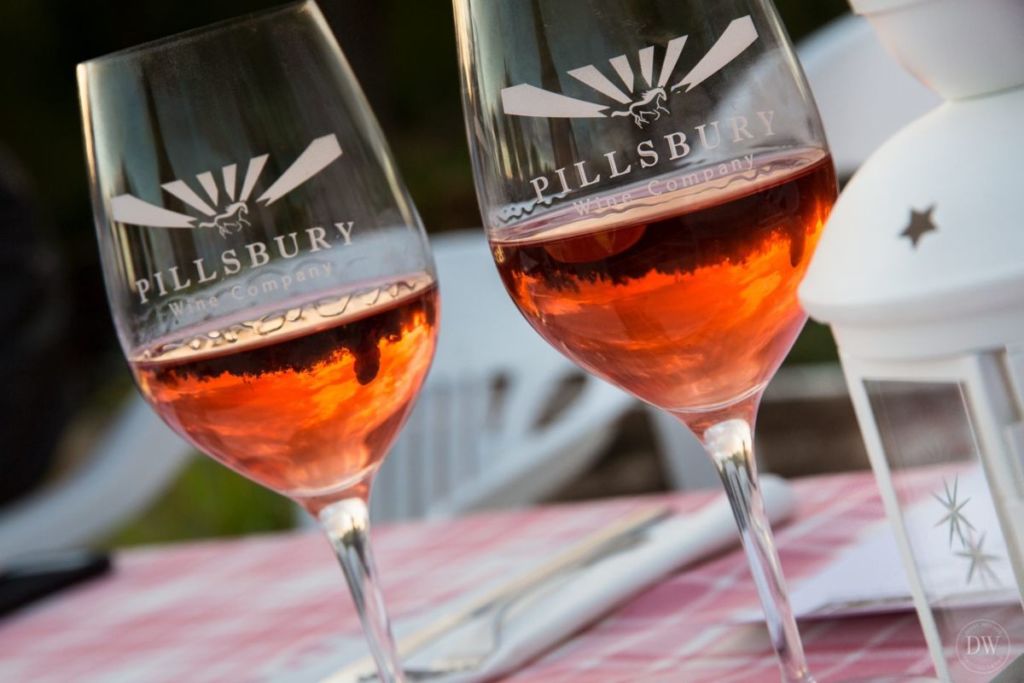
The Verde Valley
North of Phoenix, The Verde Valley region is 714 square miles and produces over 100 varietals. While most of the vineyards are located near Page Springs, there are some grapes growing in Jerome and Cottonwood as well. The soil here is slightly alkaline and has a high mineral content – mostly due from the Verde Valley’s volcanic past and the nearby Verde River.
When a winery wins “Best in Show,” wine lovers take notice. Arizona Stronghold Vineyards, one of the highly rated wineries in The Verde Valley region won this prestigious award at the 2016 Arizona Republic Wine Competition with its 2014 Gewurztraminer. This winery also won for Best Dessert Wine, Best Malbec, Best Petite Sirah and Best Syrah. Javelina Leap Vineyard in Cornville is also a recipient of multiple awards from the competition including Best Cabernet Sauvignon, Best Zinfandel and Best Sangiovese. Javelina Leap offers a lovely tasting in their Secret Garden where guests can sample artisan cheese platters, deli meats and artisan pizza along with the wines. Another notable winery is Page Springs Cellars in Cottonwood. A family-owned vineyard and winery, it’s tucked into the volcanic landscape overlooking beautiful Oak Creek. Specializing in Rhone style wines, a visit here will offer stunning views along with your tastings.
Arizona never ceases to amaze residents and visitors alike with her gorgeous scenic landscapes, a fascinating history and culture, and now a wine industry that has the rest of the world beginning to talk. If you haven’t yet, be sure to be part of the conversation! Salut!
Visit the Arizona Wine Growers Association website ArizonaWine.org for more information on the Arizona wine industry, details of each and every winery, upcoming festival and events and more.

